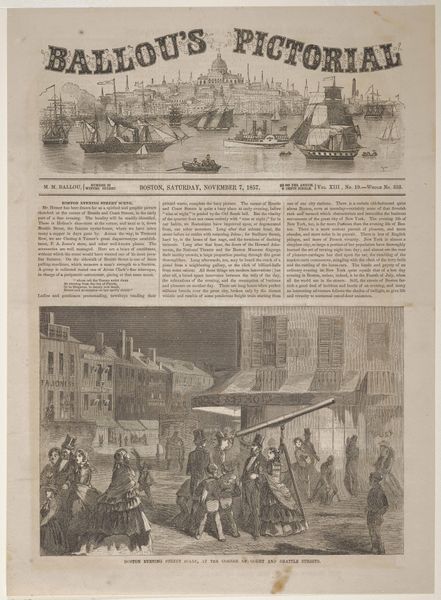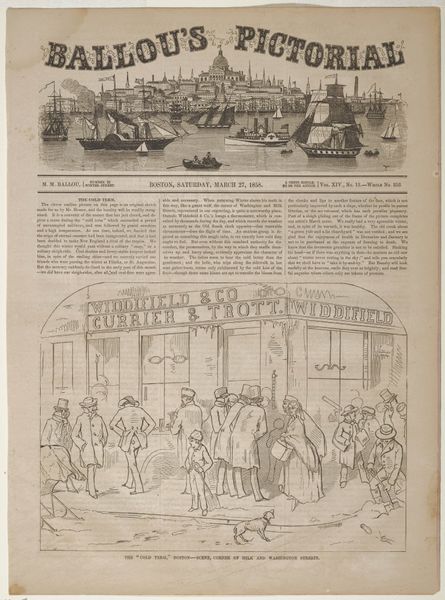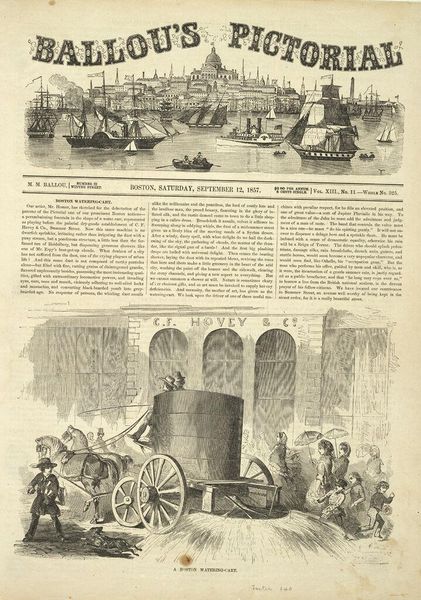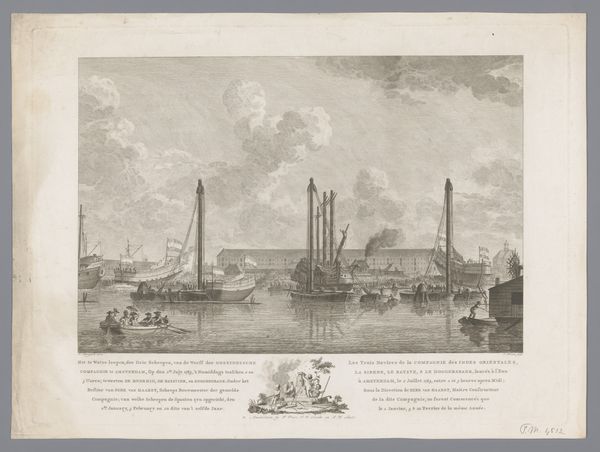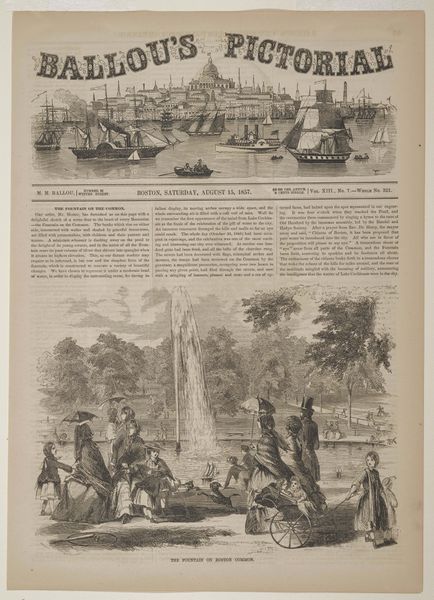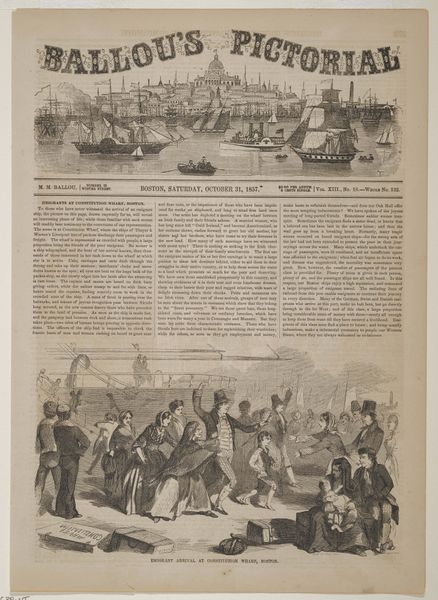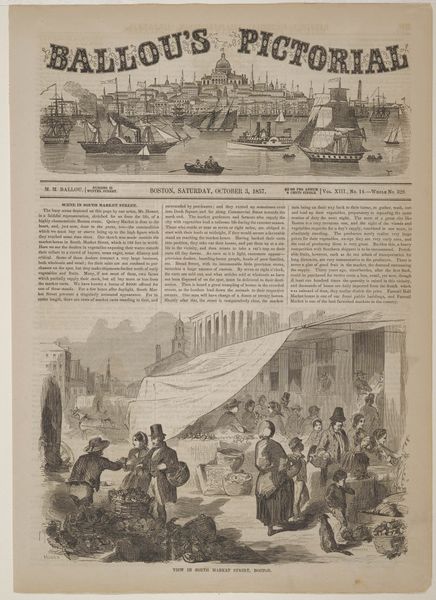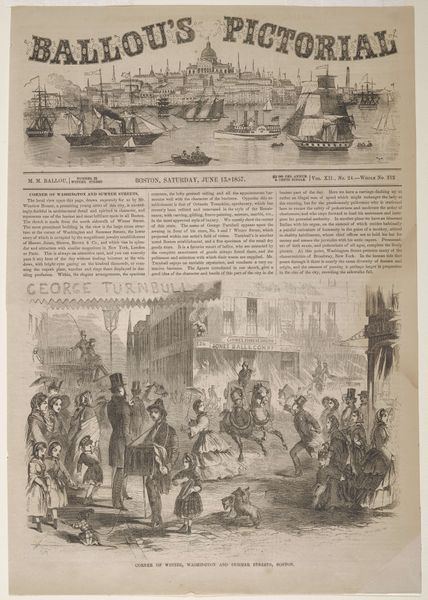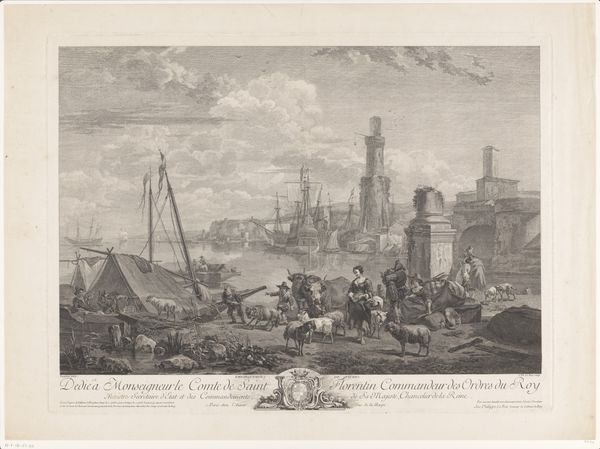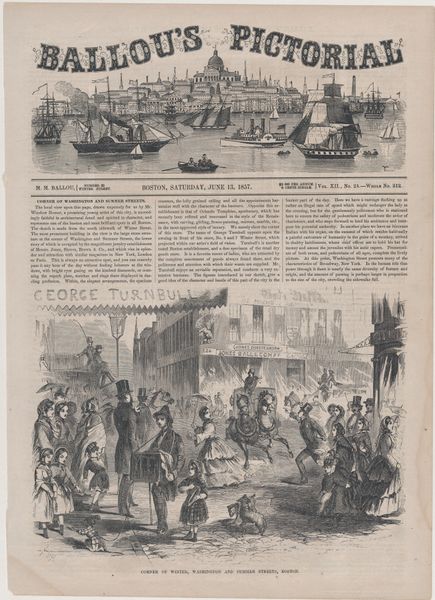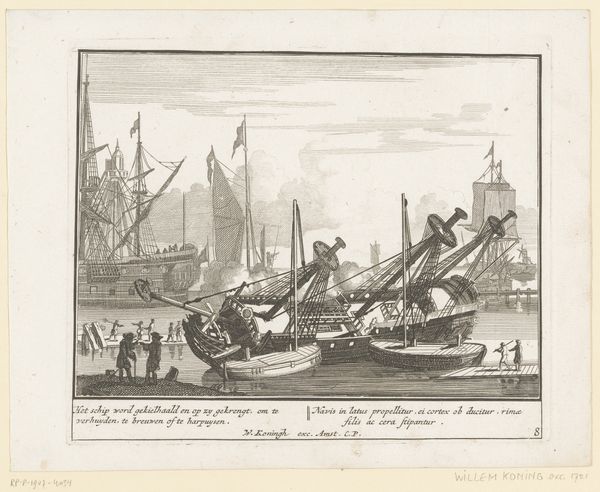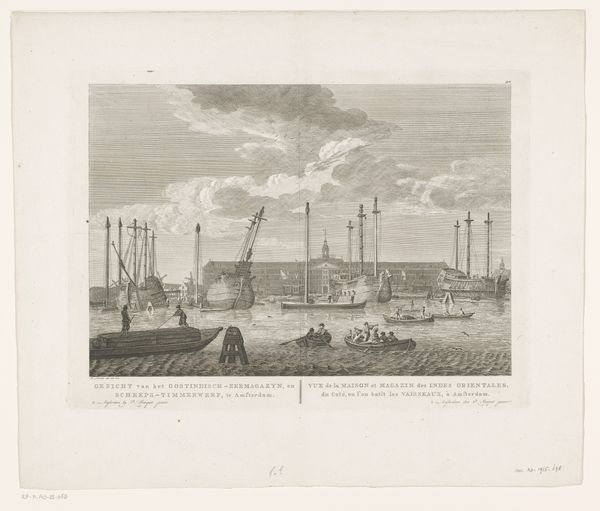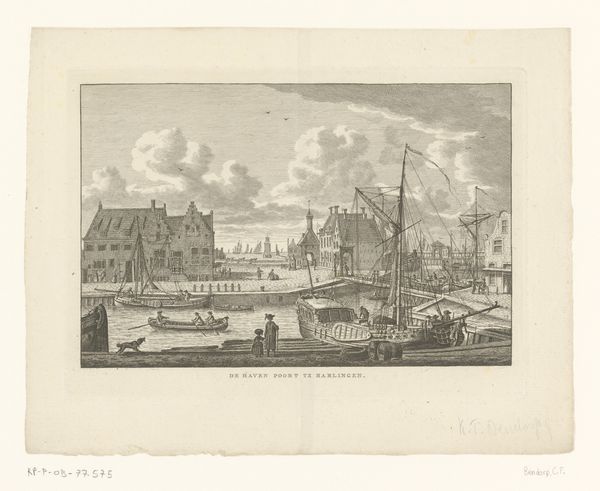
print, etching, woodblock-print, woodcut, wood-engraving
# print
#
etching
#
old engraving style
#
personal sketchbook
#
woodblock-print
#
woodcut
#
united-states
#
cityscape
#
genre-painting
#
wood-engraving
Dimensions: 6 1/2 x 9 1/2 in. (16.51 x 24.13 cm) (image)15 5/16 x 10 15/16 in. (38.89 x 27.78 cm) (sheet)
Copyright: Public Domain
Editor: Winslow Homer's "A Boston Watering Cart," made in 1857. It seems to be an etching or wood engraving, showing a street scene in Boston. The scene is somewhat somber and makes me curious. How do you interpret this work in terms of its historical context and symbolism? Curator: Indeed. Think about what a watering cart *meant* in a mid-19th century urban environment. Dust wasn't just dust. It carried disease, the grime of horses and industry. The cart, therefore, represents civic order and public health, an emerging sense of responsibility towards the collective well-being. The backdrop depicts ships. What is their role here? Editor: Hmm, I guess the ships in the harbor represent Boston’s economic engine, all that commerce, and this is set against an attempt to manage the unglamorous aspects of that growth on land? Is there a direct relationship? Curator: Precisely! The ships connect the local to the global economy; the watering cart embodies Boston's effort to civilize the effects of wealth and trade. Notice how Homer contrasts the bustle of the figures on the street with the still, contained water in the barrel. Do you see any religious iconography in the piece? Consider baptism. Editor: I didn't at first, but now that you mention it, the water *is* cleansing. The placement of the C.F. Hovey & Co store might add an aspect of commercial endorsement of these new public works and services! Curator: Perhaps! And remember, the periodical itself - "Ballou's Pictorial"- speaks to the rising literacy and the importance of illustrated news in shaping public opinion. It's not just an image; it's a statement about progress. Editor: It’s incredible how much meaning can be packed into one seemingly simple street scene. Curator: Absolutely! Recognizing these layers transforms how we see the image – and how people *at that time* understood it too. It is cultural memory made visible!
Comments
No comments
Be the first to comment and join the conversation on the ultimate creative platform.
